AI Image Tools Spark Chaos in Attack on Titan Discord
The realm of AI-powered content creation is thrilling yet unpredictable. What unfolds when a group of anime enthusiasts gains access to a cutting-edge AI text-to-image tool? Absolute mayhem! Dive into the uproarious and sometimes calamitous results of an experiment within an Attack on Titan Discord community. Expect surprising turns, quirky images, and plenty of laughs as we uncover the strengths—and occasional missteps—of AI-driven image creation.
Key Highlights
Connie unveils an AI text-to-image tool to the Discord group.
Jean voices immediate worries about looming trouble.
Eren eagerly looks forward to the comedic potential.
Mikasa firmly declines to deal with any fallout.
Historia launches the experiment with a bold request.
The AI's outputs stun and amuse the group.
The Experiment Kicks Off: Attack on Titan Discord
The Reveal: AI Text-to-Image Tool Joins the Chat
The Attack on Titan Discord server hummed with excitement
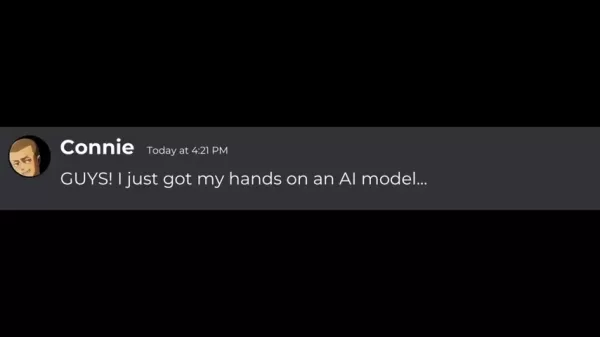
. Connie, always chasing the latest tech, announced with gusto, 'Folks! I’ve got an AI tool that turns text into images!' The news sparked a mix of thrill and caution. The chance to craft unique, funny content was clear, but the AI’s unpredictability raised concerns. Would this be a playful venture or a total fiasco? Only time would reveal. The AI tool opened doors to creative possibilities, but the group’s initial reactions were split. Some were pumped for the laughs, while others braced for chaos.
Early Reactions: A Hint of Trouble Ahead
Jean, the group’s cautious realist, quickly replied with a grim, 'Oh boy.'
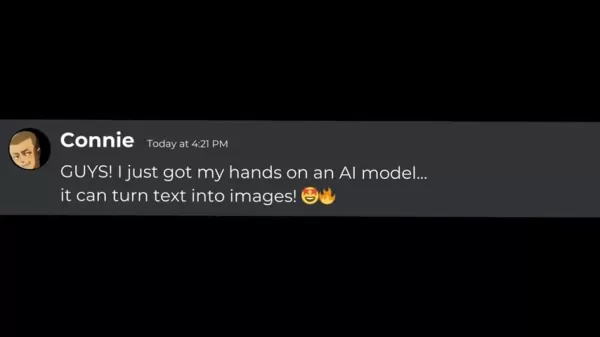
He added, 'This is already shaping up to be a mess.' His wariness made sense. Handing a lively anime-loving crew a powerful AI image tool was bound to yield wild results. Meanwhile, Eren, the group’s risk-taker, was ecstatic. 'This is gonna be epic,' he proclaimed, urging, 'Let’s dive in!' His excitement spread, rallying others to test the AI’s capabilities. Amid the buzz, Mikasa issued a firm warning: 'If this spirals into chaos, I’m not fixing it.' Her words underscored that even fun experiments can have consequences.
Voices of Doubt: Reiner and Annie’s Worries
Reiner, carrying the weight of past Discord antics, voiced a 'bad vibe' about the plan
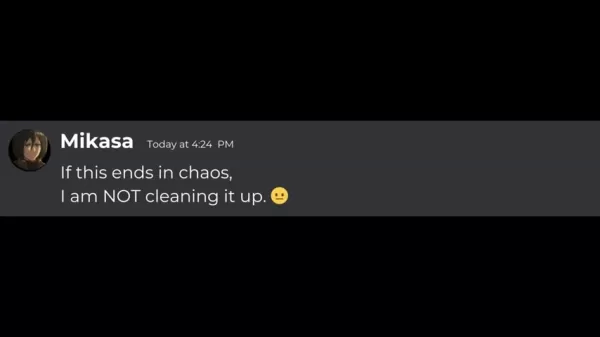
. Annie, always practical, echoed, 'Agreed.' Their shared concern highlighted the risk of things going off the rails. After all, AI image generation can be a wildcard, and the Attack on Titan crew wasn’t known for holding back. Reiner and Annie’s unease added tension to the unfolding experiment. Would their fears come true, or would the AI deliver harmless fun?
Science Unleashed: Hange’s Boundless Excitement
In sharp contrast, Hange Zoe, the group’s wild innovator, was brimming with enthusiasm
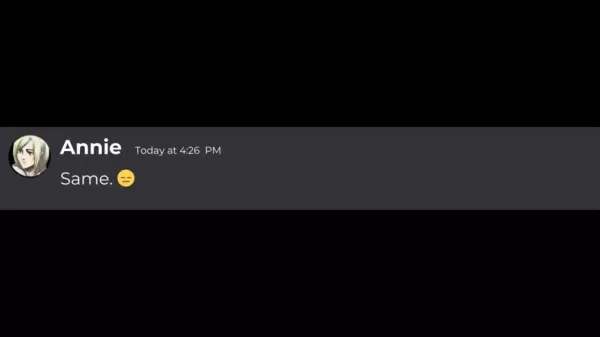
. 'Yes! Science time!' she declared, tossing in devil and test tube emojis. Hange’s zeal drove the group into uncharted territory. Her passion for experimentation often led to breakthroughs or disasters, and this AI venture seemed poised for both. With Hange leading, the Attack on Titan Discord was set for a thrilling dive into AI creativity.
Levi’s Skepticism: A Warning of Trouble?
Levi, the group’s stern captain, bluntly said, 'I’m already over this'
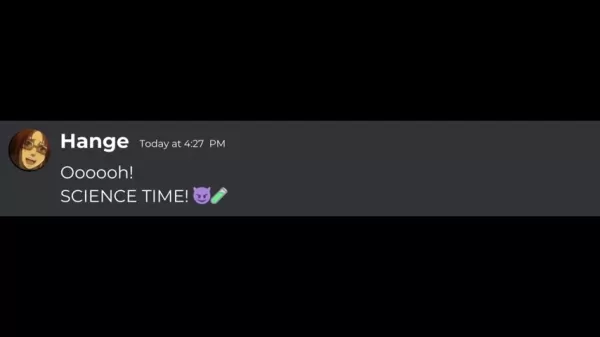
. His disapproval resonated with the cautious members. Known for hating disorder, Levi saw the AI experiment as a recipe for trouble. His stance hinted at potential doom. Would the AI’s creations be so wild that even Levi’s composure would falter? The tension was palpable.
The First Prompt and Its Wild Outcome
Historia’s Daring Input: The AI Takes Center Stage
Historia, ever bold, started things off with a cheeky prompt: 'Historia with D-sized cups'
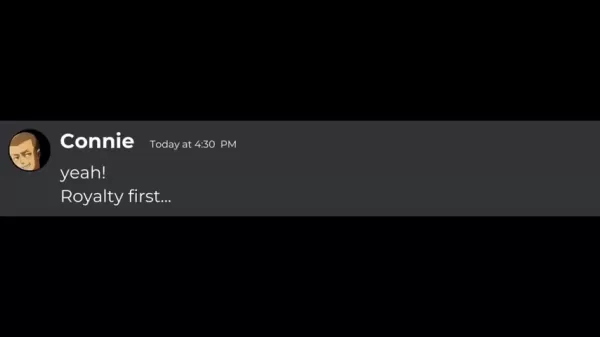
. The server waited eagerly for the AI’s take. The request pushed boundaries, even for their unfiltered Discord chats. The AI processed, sifting through data to craft its version of Historia’s prompt. The result? A wholesome image of Historia in a field, holding two oversized teacups instead of what she implied. The absurdity triggered a wave of laughter and shock across the server. The AI’s literal take wasn’t what Historia expected, but it sparked a flood of even wilder prompts, each more outrageous than the last, as the crew tested the AI’s limits.
The Fallout: Reactions and Insights
The server exploded with reactions. Jean, unsurprisingly, cried out, 'What the heck?!'
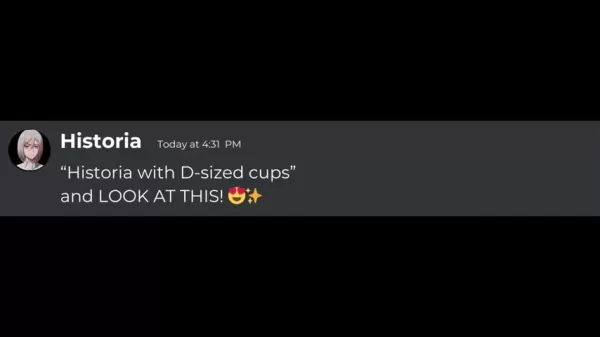
His fears had come to life. The AI tool, unleashed on the Attack on Titan Discord, proved a source of unpredictable hilarity. The experiment showcased both the potential and pitfalls of AI image creation. While often absurd, the results also hinted at AI’s creative power. As the crew explored further, one thing was clear: this was just the start of a chaotic, funny journey. The experiment underscored the need for a sense of humor and openness to surprises when using AI, while also highlighting the importance of responsible use to avoid unintended consequences.
Pros and Cons of AI Text-to-Image Tools
Pros
Fast Image Creation: Produces visuals swiftly, saving time and effort.
Budget-Friendly: Cuts costs for photographers, designers, or stock images.
Wide Applications: Valuable for marketing, education, art, and data visualization.
Creative Boost: Offers a fresh way to brainstorm and visualize ideas.
Cons
Inaccuracy Risks: Struggles with complex or vague prompts.
Bias Issues: Training data may lead to biased or unfair outputs.
Ethical Challenges: Risks include creating misleading content or violating copyrights.
Creativity Limits: Lacks the originality and depth of human artistry.
FAQ
What is an AI Text-to-Image Tool?
An AI text-to-image tool uses artificial intelligence to create images from text descriptions. Leveraging machine learning, it interprets the connection between words and visuals to generate images based on user inputs. These tools serve purposes like art creation, product design, and marketing content generation. As technology advances, the quality and realism of these images continue to improve, expanding their potential uses. They rely on vast datasets to produce accurate visuals.
What Are the Potential Uses of AI Text-to-Image Tools?
AI text-to-image tools offer diverse applications across industries. In art and design, they help create original works or visualize concepts. In marketing, they produce compelling visuals for campaigns. In education, they craft teaching aids and visuals. In research, they help visualize data or concepts, aiding innovation. Their versatility makes them a powerful tool for creativity and problem-solving, opening new avenues for collaboration and expression.
What Ethical Issues Surround AI Text-to-Image Tools?
AI text-to-image tools raise critical ethical concerns. They may generate biased or discriminatory images if trained on skewed data, perpetuating stereotypes. There’s also the risk of misuse, such as creating deepfakes or misleading content, which can harm individuals or society. Copyright issues arise when AI incorporates elements from protected works. To address these, guidelines must ensure diverse training data, prevent biased outputs, and promote responsible use to mitigate potential harm.
Related Questions
How Accurate Are AI Text-to-Image Tools?
The accuracy of AI text-to-image tools varies based on training data quality, prompt complexity, and model design. They excel with clear, specific prompts but may falter with vague or abstract ones. Advances in algorithms and data are improving their precision, but accuracy also depends on user perception, as interpretations of “accurate” vary. Cultural and contextual nuances can further complicate results, making human judgment a key factor in evaluating outputs.
What Are the Limitations of AI Text-to-Image Tools?
AI text-to-image tools face several challenges. They rely on large datasets, which can be scarce for niche areas or languages. Complex or ambiguous prompts often lead to inaccurate or absurd results. Biases in training data can produce unfair outputs, and the tools lack the creative spark of human artists. Researchers are working to reduce data dependency, improve prompt handling, address biases, and enhance creativity to make these tools more effective.
Related article
 AI-Generated Crossover Unites Arthur Morgan and Joshua Graham in Gaming Multiverse
When Gaming Worlds Collide: Arthur Morgan Meets the Burned ManPicture a realm where legendary game characters step beyond their own stories - what unfolds when Red Dead Redemption 2's Arthur Morgan crosses paths with Fallout: New Vegas' scarred proph
AI-Generated Crossover Unites Arthur Morgan and Joshua Graham in Gaming Multiverse
When Gaming Worlds Collide: Arthur Morgan Meets the Burned ManPicture a realm where legendary game characters step beyond their own stories - what unfolds when Red Dead Redemption 2's Arthur Morgan crosses paths with Fallout: New Vegas' scarred proph
 Microsoft hosts xAI's advanced Grok 3 models in new AI collaboration
Earlier this month, my *Notepad* investigative journalism uncovered Microsoft's plans to integrate Elon Musk's Grok AI models - revelations that have now been officially confirmed. Today at Microsoft's annual Build developer conference, company execu
Microsoft hosts xAI's advanced Grok 3 models in new AI collaboration
Earlier this month, my *Notepad* investigative journalism uncovered Microsoft's plans to integrate Elon Musk's Grok AI models - revelations that have now been officially confirmed. Today at Microsoft's annual Build developer conference, company execu
 Depeche Mode's Faith Songs Get AI Remix & Deep Analysis
(or if shorter needed)
AI Remixes and Analyzes Depeche Mode's Songs of Faith
Depeche Mode's groundbreaking album Songs of Faith and Devotion stands as a defining moment in electronic music's evolution. Released in 1993 during the band's creative zenith, this masterwork boldly redefined their signature sound by blending indust
Comments (1)
0/200
Depeche Mode's Faith Songs Get AI Remix & Deep Analysis
(or if shorter needed)
AI Remixes and Analyzes Depeche Mode's Songs of Faith
Depeche Mode's groundbreaking album Songs of Faith and Devotion stands as a defining moment in electronic music's evolution. Released in 1993 during the band's creative zenith, this masterwork boldly redefined their signature sound by blending indust
Comments (1)
0/200
![PeterMartinez]() PeterMartinez
PeterMartinez
 August 18, 2025 at 11:01:00 PM EDT
August 18, 2025 at 11:01:00 PM EDT
This AI image tool sounds like a wild ride for Attack on Titan fans! 😍 But seriously, is it creating epic art or just stirring up chaos in the Discord?


 0
0
The realm of AI-powered content creation is thrilling yet unpredictable. What unfolds when a group of anime enthusiasts gains access to a cutting-edge AI text-to-image tool? Absolute mayhem! Dive into the uproarious and sometimes calamitous results of an experiment within an Attack on Titan Discord community. Expect surprising turns, quirky images, and plenty of laughs as we uncover the strengths—and occasional missteps—of AI-driven image creation.
Key Highlights
Connie unveils an AI text-to-image tool to the Discord group.
Jean voices immediate worries about looming trouble.
Eren eagerly looks forward to the comedic potential.
Mikasa firmly declines to deal with any fallout.
Historia launches the experiment with a bold request.
The AI's outputs stun and amuse the group.
The Experiment Kicks Off: Attack on Titan Discord
The Reveal: AI Text-to-Image Tool Joins the Chat
The Attack on Titan Discord server hummed with excitement

. Connie, always chasing the latest tech, announced with gusto, 'Folks! I’ve got an AI tool that turns text into images!' The news sparked a mix of thrill and caution. The chance to craft unique, funny content was clear, but the AI’s unpredictability raised concerns. Would this be a playful venture or a total fiasco? Only time would reveal. The AI tool opened doors to creative possibilities, but the group’s initial reactions were split. Some were pumped for the laughs, while others braced for chaos.
Early Reactions: A Hint of Trouble Ahead
Jean, the group’s cautious realist, quickly replied with a grim, 'Oh boy.'

He added, 'This is already shaping up to be a mess.' His wariness made sense. Handing a lively anime-loving crew a powerful AI image tool was bound to yield wild results. Meanwhile, Eren, the group’s risk-taker, was ecstatic. 'This is gonna be epic,' he proclaimed, urging, 'Let’s dive in!' His excitement spread, rallying others to test the AI’s capabilities. Amid the buzz, Mikasa issued a firm warning: 'If this spirals into chaos, I’m not fixing it.' Her words underscored that even fun experiments can have consequences.
Voices of Doubt: Reiner and Annie’s Worries
Reiner, carrying the weight of past Discord antics, voiced a 'bad vibe' about the plan

. Annie, always practical, echoed, 'Agreed.' Their shared concern highlighted the risk of things going off the rails. After all, AI image generation can be a wildcard, and the Attack on Titan crew wasn’t known for holding back. Reiner and Annie’s unease added tension to the unfolding experiment. Would their fears come true, or would the AI deliver harmless fun?
Science Unleashed: Hange’s Boundless Excitement
In sharp contrast, Hange Zoe, the group’s wild innovator, was brimming with enthusiasm

. 'Yes! Science time!' she declared, tossing in devil and test tube emojis. Hange’s zeal drove the group into uncharted territory. Her passion for experimentation often led to breakthroughs or disasters, and this AI venture seemed poised for both. With Hange leading, the Attack on Titan Discord was set for a thrilling dive into AI creativity.
Levi’s Skepticism: A Warning of Trouble?
Levi, the group’s stern captain, bluntly said, 'I’m already over this'

. His disapproval resonated with the cautious members. Known for hating disorder, Levi saw the AI experiment as a recipe for trouble. His stance hinted at potential doom. Would the AI’s creations be so wild that even Levi’s composure would falter? The tension was palpable.
The First Prompt and Its Wild Outcome
Historia’s Daring Input: The AI Takes Center Stage
Historia, ever bold, started things off with a cheeky prompt: 'Historia with D-sized cups'

. The server waited eagerly for the AI’s take. The request pushed boundaries, even for their unfiltered Discord chats. The AI processed, sifting through data to craft its version of Historia’s prompt. The result? A wholesome image of Historia in a field, holding two oversized teacups instead of what she implied. The absurdity triggered a wave of laughter and shock across the server. The AI’s literal take wasn’t what Historia expected, but it sparked a flood of even wilder prompts, each more outrageous than the last, as the crew tested the AI’s limits.
The Fallout: Reactions and Insights
The server exploded with reactions. Jean, unsurprisingly, cried out, 'What the heck?!'

His fears had come to life. The AI tool, unleashed on the Attack on Titan Discord, proved a source of unpredictable hilarity. The experiment showcased both the potential and pitfalls of AI image creation. While often absurd, the results also hinted at AI’s creative power. As the crew explored further, one thing was clear: this was just the start of a chaotic, funny journey. The experiment underscored the need for a sense of humor and openness to surprises when using AI, while also highlighting the importance of responsible use to avoid unintended consequences.
Pros and Cons of AI Text-to-Image Tools
Pros
Fast Image Creation: Produces visuals swiftly, saving time and effort.
Budget-Friendly: Cuts costs for photographers, designers, or stock images.
Wide Applications: Valuable for marketing, education, art, and data visualization.
Creative Boost: Offers a fresh way to brainstorm and visualize ideas.
Cons
Inaccuracy Risks: Struggles with complex or vague prompts.
Bias Issues: Training data may lead to biased or unfair outputs.
Ethical Challenges: Risks include creating misleading content or violating copyrights.
Creativity Limits: Lacks the originality and depth of human artistry.
FAQ
What is an AI Text-to-Image Tool?
An AI text-to-image tool uses artificial intelligence to create images from text descriptions. Leveraging machine learning, it interprets the connection between words and visuals to generate images based on user inputs. These tools serve purposes like art creation, product design, and marketing content generation. As technology advances, the quality and realism of these images continue to improve, expanding their potential uses. They rely on vast datasets to produce accurate visuals.
What Are the Potential Uses of AI Text-to-Image Tools?
AI text-to-image tools offer diverse applications across industries. In art and design, they help create original works or visualize concepts. In marketing, they produce compelling visuals for campaigns. In education, they craft teaching aids and visuals. In research, they help visualize data or concepts, aiding innovation. Their versatility makes them a powerful tool for creativity and problem-solving, opening new avenues for collaboration and expression.
What Ethical Issues Surround AI Text-to-Image Tools?
AI text-to-image tools raise critical ethical concerns. They may generate biased or discriminatory images if trained on skewed data, perpetuating stereotypes. There’s also the risk of misuse, such as creating deepfakes or misleading content, which can harm individuals or society. Copyright issues arise when AI incorporates elements from protected works. To address these, guidelines must ensure diverse training data, prevent biased outputs, and promote responsible use to mitigate potential harm.
Related Questions
How Accurate Are AI Text-to-Image Tools?
The accuracy of AI text-to-image tools varies based on training data quality, prompt complexity, and model design. They excel with clear, specific prompts but may falter with vague or abstract ones. Advances in algorithms and data are improving their precision, but accuracy also depends on user perception, as interpretations of “accurate” vary. Cultural and contextual nuances can further complicate results, making human judgment a key factor in evaluating outputs.
What Are the Limitations of AI Text-to-Image Tools?
AI text-to-image tools face several challenges. They rely on large datasets, which can be scarce for niche areas or languages. Complex or ambiguous prompts often lead to inaccurate or absurd results. Biases in training data can produce unfair outputs, and the tools lack the creative spark of human artists. Researchers are working to reduce data dependency, improve prompt handling, address biases, and enhance creativity to make these tools more effective.
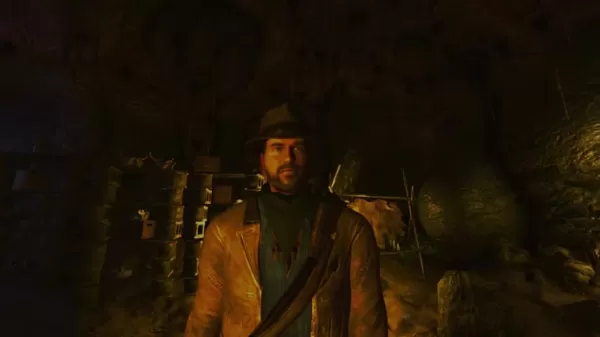 AI-Generated Crossover Unites Arthur Morgan and Joshua Graham in Gaming Multiverse
When Gaming Worlds Collide: Arthur Morgan Meets the Burned ManPicture a realm where legendary game characters step beyond their own stories - what unfolds when Red Dead Redemption 2's Arthur Morgan crosses paths with Fallout: New Vegas' scarred proph
AI-Generated Crossover Unites Arthur Morgan and Joshua Graham in Gaming Multiverse
When Gaming Worlds Collide: Arthur Morgan Meets the Burned ManPicture a realm where legendary game characters step beyond their own stories - what unfolds when Red Dead Redemption 2's Arthur Morgan crosses paths with Fallout: New Vegas' scarred proph
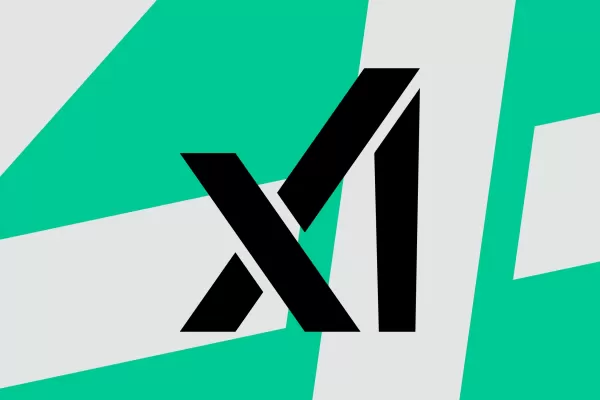 Microsoft hosts xAI's advanced Grok 3 models in new AI collaboration
Earlier this month, my *Notepad* investigative journalism uncovered Microsoft's plans to integrate Elon Musk's Grok AI models - revelations that have now been officially confirmed. Today at Microsoft's annual Build developer conference, company execu
Microsoft hosts xAI's advanced Grok 3 models in new AI collaboration
Earlier this month, my *Notepad* investigative journalism uncovered Microsoft's plans to integrate Elon Musk's Grok AI models - revelations that have now been officially confirmed. Today at Microsoft's annual Build developer conference, company execu
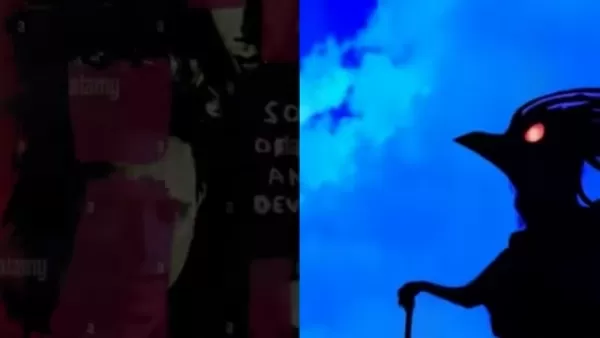 Depeche Mode's Faith Songs Get AI Remix & Deep Analysis
(or if shorter needed)
AI Remixes and Analyzes Depeche Mode's Songs of Faith
Depeche Mode's groundbreaking album Songs of Faith and Devotion stands as a defining moment in electronic music's evolution. Released in 1993 during the band's creative zenith, this masterwork boldly redefined their signature sound by blending indust
Depeche Mode's Faith Songs Get AI Remix & Deep Analysis
(or if shorter needed)
AI Remixes and Analyzes Depeche Mode's Songs of Faith
Depeche Mode's groundbreaking album Songs of Faith and Devotion stands as a defining moment in electronic music's evolution. Released in 1993 during the band's creative zenith, this masterwork boldly redefined their signature sound by blending indust
 August 18, 2025 at 11:01:00 PM EDT
August 18, 2025 at 11:01:00 PM EDT
This AI image tool sounds like a wild ride for Attack on Titan fans! 😍 But seriously, is it creating epic art or just stirring up chaos in the Discord?


 0
0





























